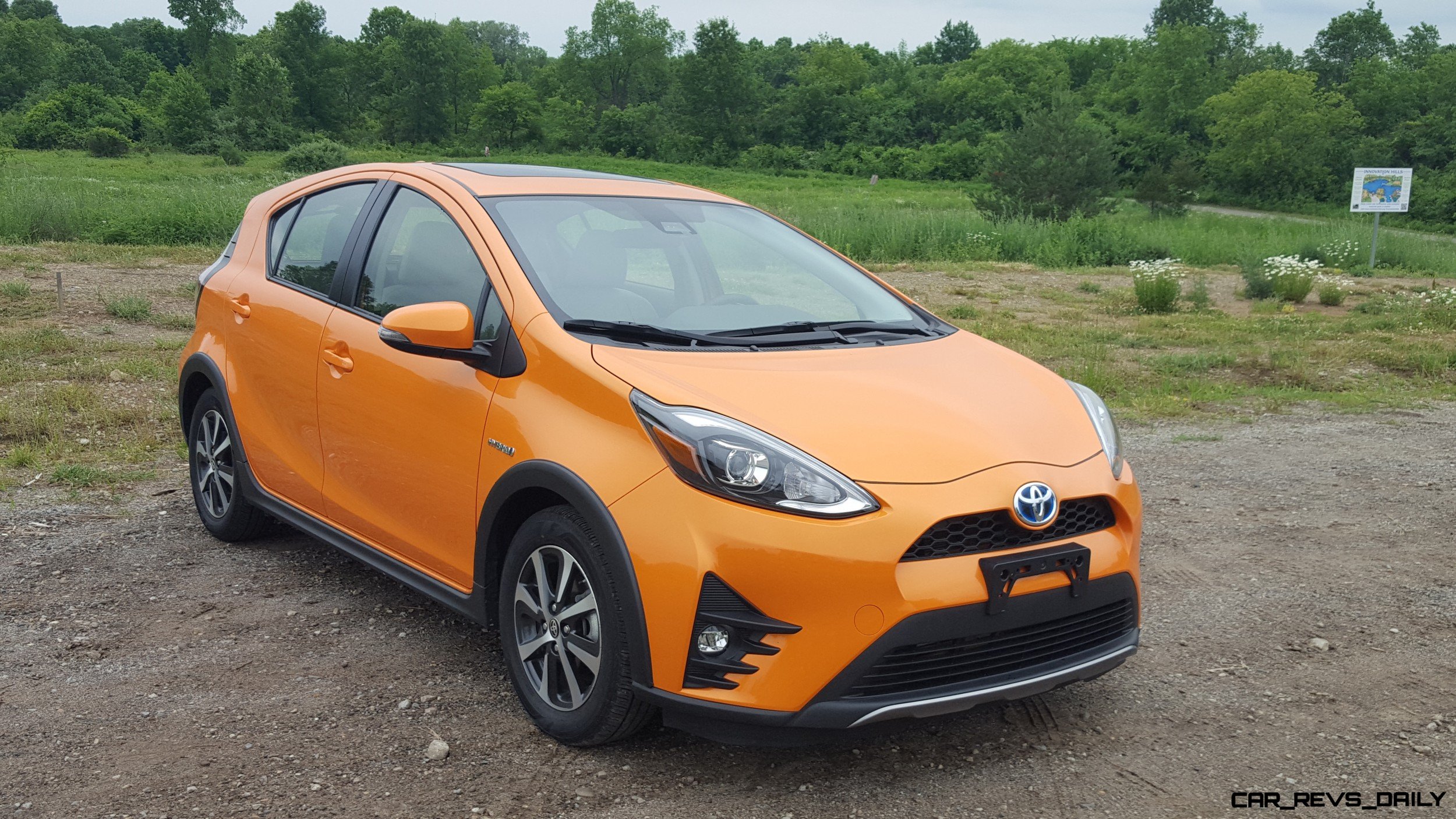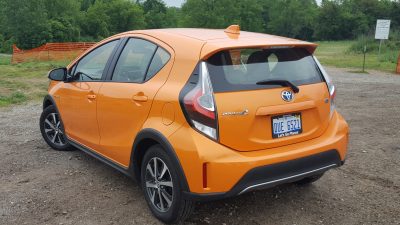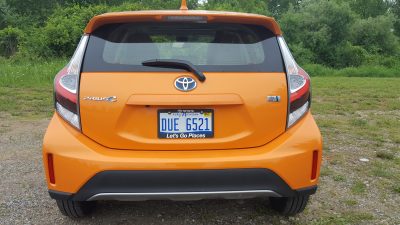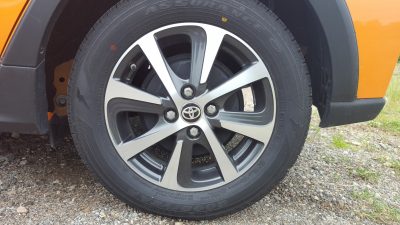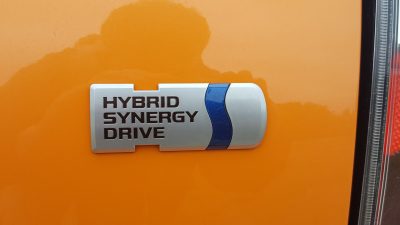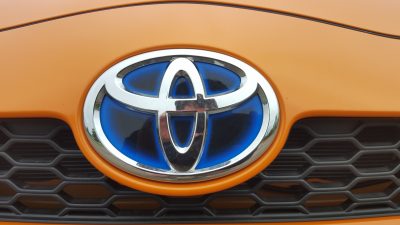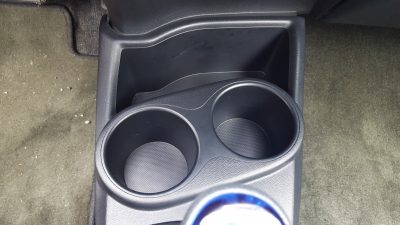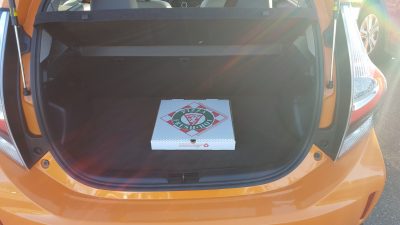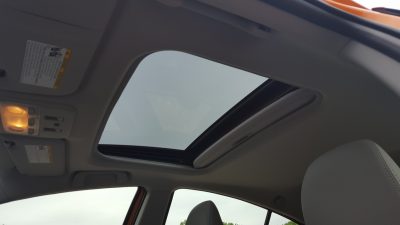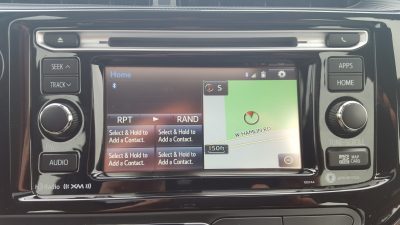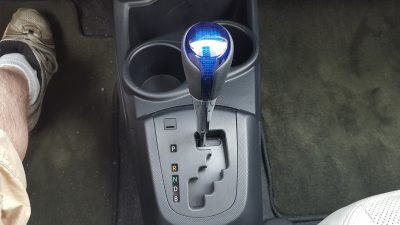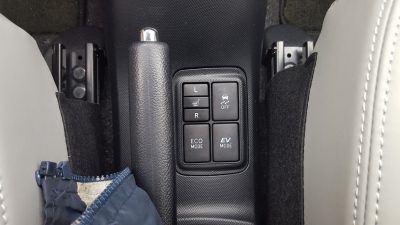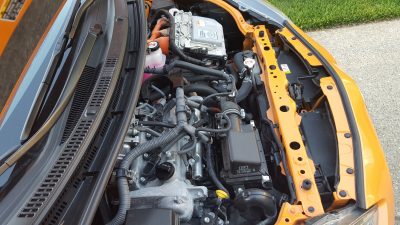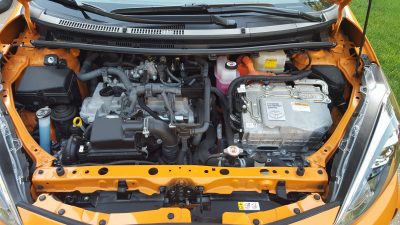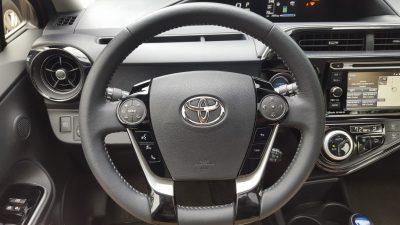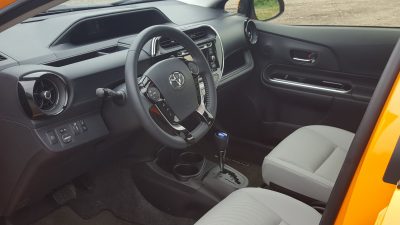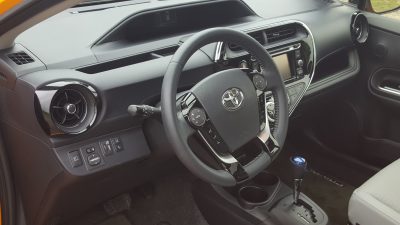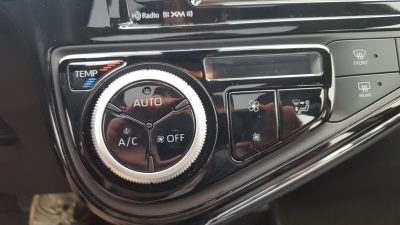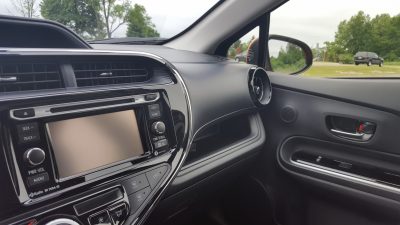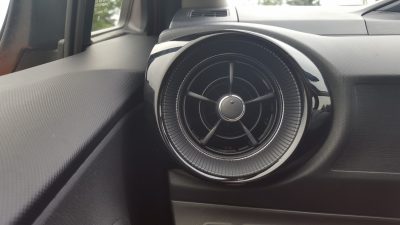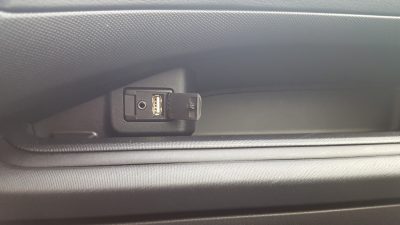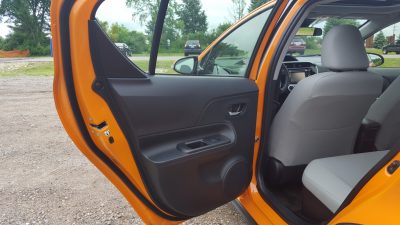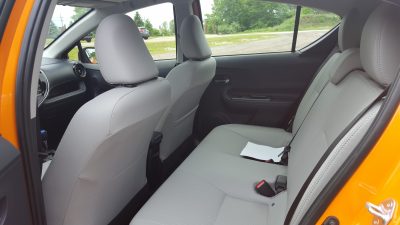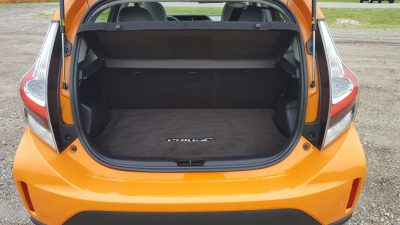The green car segment has seen its fair share of twists and turns over the past several years.
While Tesla currently has the spotlight when it comes to pure EV offerings, Toyota and its Prii range in particular are considered by many to be the benchmark offerings in the hybrid vehicle segment.
The Japanese auto giant doubled down on hybrids in the mid 1990’s with the original Prius, much to the astonishment and the occasional snicker of a few of its domestic competitors.
That initial gambit has transformed into a lucrative business, with the Prii lineup redefining green car culture and technology as we know it. The 2018 Prius C aims to bring some of the Prii charm to budget minded buyers looking for a compact green car offering. But is the 2018 Toyota Prius C the sporty Prius that can appeal to these special buyers? Or is it an example of the Prii empire overstretching its capabilities?
At first glance, the exterior styling of our Tangerine Orange hued tester embraces its compact dimensions with gusto. Like other Prii, aerodynamic efficiency plays a big role in the Prius C’s design, though the car also has a bit of chunkiness to it that helps it stray away from other offerings that tend to sacrifice styling for the sake of maximum function.
Lovingly dubbed “the cheese cube” during its time with us, the Prius C is smaller than some of its rivals. This compact size makes it easy to park in tight parking spaces, and it reminds us of the Fiat 500, as well as older MINI models in that regard.
However, there is a price to pay for this compactness, and it appears when you nestle into its tight cabin. Front legroom is abundant, but overall space is limited, with front and rear passengers having to suffer from low amounts of headroom.
Our tester’s sunroof robbed even more space, though we did appreciate the amount of light it let into the cabin. The 35.0 inches of rear legroom is higher than what is seen in the standard Prius, but is still less than some of its rivals.
Cargo room is also relatively cramped (even with the seats folded down,) but look for the Prius C to still be a good companion for weekend shopping trips, as well as light jaunts to the holiday dinner.
Toyota also gives the Prius C a balanced sheet of equipment including heated seats, the company’s latest iteration of its Entune infotainment system, and a flat bottom-esque steering wheel.
While we liked the round air vents and the sporty look they embody, it does little to hide the fact that the rest of the Prius C’s cabin is an unapologetic sea of cheap plastic and bad design.
While its budget oriented segment makes these materials necessary to a degree, the relative lack of design is not good, especially in its attempts to woo buyers that may gravitate towards entries like the Fiat 500 (the e-version is not sold here in Michigan) as well as the Kia Rio and even the Nissan Versa.
Performance for the Prius C comes from a tiny 1.5 liter four cylinder, that is good for a meager 99 horsepower. Add in a sluggish CVT transmission, and the Prius C delivers an underwhelming driving experience.
It is eager when it first gets going, but beyond 30 mph, the engine loses steam, and our tester preferred to not be rushed in its agonizingly slow climb to city speeds. Out on the freeway, its sluggishness became almost comical, with freeway passing maneuvers becoming nerve racking ordeals, especially with how much of a challenge it is to get the Prius C to the 70 mph speed limit that is in place on many of Michigan’s freeways.
Back in its home environment away from the rigors of freeway driving, the Prius C did a good job navigating city streets with good amounts of turn-in. However, the steering wheel does not have enough feedback, and the ride can feel bouncy on rough pavement, which is partially due to its compact wheelbase. Hard cornering produced moments where our tester felt ungainly, with copious amounts of body roll and slop taking away what little sport exists in its chassis.
The lone bright spot that emerged during our time with the Prius C was its stable braking behavior. Alot of hybrids struggle with seamlessly blending regenerative and mechanical braking, which produces mushy brake pedal feel. The Prius C does not have this problem, and it did a good job masking the transition between conventional and regenerative braking, with very few instances of rough vibrations.
Pricing for the 2018 Toyota Prius C starts at $20,630 for the base One model, which comes equipped with Toyota’s Safety Sense C (TCC-S) safety system along with a rear backup camera, as well as standard Bluetooth and other goodies. Like other Prii, the trim levels here are listed as numbers with Two and Three variants starting at $21,430 and $22,855 respectively.
These models live up to their role well with features such as push button start, color keyed rear spoiler, as well as navigation, and the full Entune App suite.
Lastly Four models start at $24,965, with our tester ringing in at a final sticker of $26,479 which is in the higher end of the green car segment. This is mainly thanks to its $395 special paint color (Tangerine Orange) as well as its $224 carpet floor mats and cargo mats, and $895 destination fee. While this is less than the 2018 Accord Hybrid, the Prius C in this guise is actually more expensive than the base Prius, and is pricier than the Ford C-Max hybrid, which is also aging, and is actually on its way out of production.
While the 2018 Prius C has a few bright spots in its resume, the rest of the package is simply too compromised to take seriously as a legit entry in the green car segment. There are other offerings that bring better performance, more usability, and design to backup their green ambitions. Despite these shortcomings, we think that the Prius C has the potential to truly be a key player for Toyota, especially once it receives the attention and updates it sorely needs to stay fresh.

Carl Malek has been an automotive journalist for over 10 years. First starting out as a freelance photographer before making the transition to writing during college, his work has appeared on numerous automotive forums as well as websites such as Autoshopper.com.
Carl is also a big fan of British vehicles with the bulk of his devotion going to the Morgan Motor Company as well as offerings from Lotus, MG, and Caterham. When he is not writing about automobiles, Carl enjoys spending time with his family and friends in the Metro Detroit area, as well as spending time with his adorable pets.

